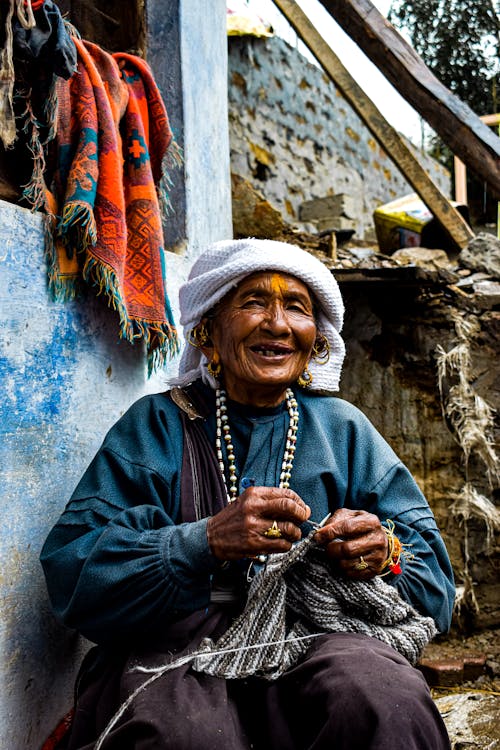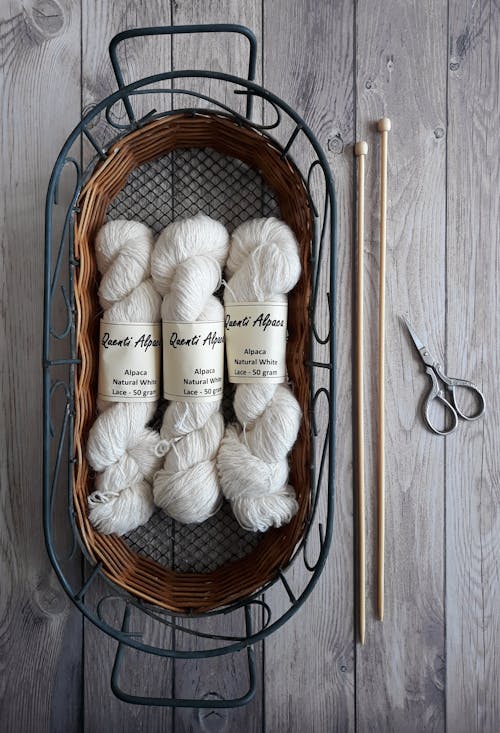The Art and Joy of Knitting: A Timeless Craft
Knitting is more than just a craft; it’s a therapeutic practice, a creative outlet, and a way to connect with traditions that date back centuries. Whether you’re a seasoned knitter or just picking up the needles for the first time, there’s always something new to discover and enjoy about this timeless art form.Knitting has a fascinating history that intertwines with human ingenuity and cultural development. Though the exact origins of knitting are hard to trace, the earliest knitted artifacts date back to 1000 CE in the Middle East. Techniques spread through trade routes, eventually reaching Europe by the 14th century. Knitting gained prominence during the Industrial Revolution when machine knitting became widespread. Despite technological advances, hand knitting retained its cultural significance, evolving from a necessity to a c

In today’s fast-paced, tech-driven world, knitting offers a return to mindfulness and creativity. The rhythmic motion of knitting is meditative, reducing stress and anxiety. Studies show that crafting activities like knitting can lower blood pressure and improve mental clarity. Each project allows knitters to express themselves through colors, patterns, and textures. From scarves to sweaters, every creation is uniquely yours. With the rise of fast fashion, knitting empowers individuals to create high-quality, long-lasting garments while reducing waste. Additionally, knitting groups, both in-person and online, foster a sense of belonging, connecting people across th globe
For beginners, the world of knitting might feel overwhelming, but it doesn’t have to be. Choose yarn that suits your project—cotton is great for beginners, while wool provides flexibility for advanced techniques. Start with medium-sized needles (US size 8 or 9) and work your way to specialized types like circular or double-pointed needles. Begin with simple projects such as dishcloths or scarves to build confidence before tackling more complex designs. Accessories like stitch

Don’t rush into intricate patterns. Master the basics—casting on, knitting, purling, and binding off—before exploring advanced techniques. Dropped stitches and uneven tension happen to everyone; learning to fix errors and viewing them as part of the learning process is key. Like any skill, consistency is important. Dedicate even 10 minutes a day to knitting, and you’ll see improvement over time. Experimenting with vibrant yarns and textured patterns keeps projects exciting, and joining a local knitting club or online forum offers support, inspiration, and friendship.
Once you’ve mastered the basics, challenge yourself with advanced techniques like cabling to create interwoven patterns, Fair Isle knitting to introduce multiple colors, lacework for airy designs, and intarsia for knitting large blocks of color seamlessly into your fabric.
Knitting isn’t just about creating something tangible; it’s an act of self-care. The repetitive motion is calming, allowing you to focus on the present. The satisfaction of finishing a project provides a sense of accomplishment and pride. One of the most rewarding aspects of knitting is gifting your creations. Handmade items carry a personal touch that store-bought products can’t replicate. Many knitters also contribute to charity, crafting blankets, hats, and scarves for those in need.
The craft of knitting continues to evolve. Modern trends like eco-friendly yarns, digital patterns, and 3D-printed knitting tools are reshaping the landscape. Despite these innovations, the heart of knitting remains unchanged—a simple act of creation that connects us to our ancestors and to each other.
Knitting is more than just a hobby; it’s a journey. Whether you’re knitting to unwind, express yourself, or connect with others, the possibilities are endless. Pick up those needles, grab some yarn, and start crafting memories, one stitch at a time.
Go room to room in your home and make a list of what needs cleaning with an estimated time frame you will need to complete each task. This will help you make the most of any spare 5 minutes but also allow you to really sink your teeth into the bigger jobs when you do have a longer block of time available.
I also use this list as a brain dump. Instead of getting overwhelmed by the task at hand, I get everything down on paper. When I do get around to the actual cleaning I don’t find myself getting distracted by the other jobs I come across. If it’s on the list I know I will get around to it at some point, rather than trying to do too much at once (and not actually finishing anything at all!)

Knitting has a fascinating history that intertwines with human ingenuity and cultural development. Though the exact origins of knitting are hard to trace, the earliest knitted artifacts date back to 1000 CE in the Middle East. Techniques spread through trade routes, eventually reaching Europe by the 14th century. Knitting gained prominence during the Industrial Revolution when machine knitting became widespread. Despite technological advances, hand knitting retained its cultural significance, evolving from a necessity to a cherished hobby.
In today’s fast-paced, tech-driven world, knitting offers a return to mindfulness and creativity. The rhythmic motion of knitting is meditative, reducing stress and anxiety. Studies show that crafting activities like knitting can lower blood pressure and improve mental clarity. Each project allows knitters to express themselves through colors, patterns, and textures. From scarves to sweaters, every creation is uniquely yours. With the rise of fast fashion, knitting empowers individuals to create high-quality, long-lasting garments while reducing waste. Additionally, knitting groups, both in-person and online, foster a sense of belonging, connecting people across the globe.
For beginners, the world of knitting might feel overwhelming, but it doesn’t have to be. Choose yarn that suits your project—cotton is great for beginners, while wool provides flexibility for advanced techniques. Start with medium-sized needles (US size 8 or 9) and work your way to specialized types like circular or double-pointed needles. Begin with simple projects such as dishcloths or scarves to build confidence before tackling more complex designs. Accessories like stitch markers, scissors, and a measuring tape are small tools that make a big difference.
Don’t rush into intricate patterns. Master the basics—casting on, knitting, purling, and binding off—before exploring advanced techniques. Dropped stitches and uneven tension happen to everyone; learning to fix errors and viewing them as part of the learning process is key. Like any skill, consistency is important. Dedicate even 10 minutes a day to knitting, and you’ll see improvement over time. Experimenting with vibrant yarns and textured patterns keeps projects exciting, and joining a local knitting club or online forum offers support, inspiration, and friendship.
Once you’ve mastered the basics, challenge yourself with advanced techniques like cabling to create interwoven patterns, Fair Isle knitting to introduce multiple colors, lacework for airy designs, and intarsia for knitting large blocks of color seamlessly into your fabric.
Knitting isn’t just about creating something tangible; it’s an act of self-care. The repetitive motion is calming, allowing you to focus on the present. The satisfaction of finishing a project provides a sense of accomplishment and pride. One of the most rewarding aspects of knitting is gifting your creations. Handmade items carry a personal touch that store-bought products can’t replicate. Many knitters also contribute to charity, crafting blankets, hats, and scarves for those in need.
The craft of knitting continues to evolve. Modern trends like eco-friendly yarns, digital patterns, and 3D-printed knitting tools are reshaping the landscape. Despite these innovations, the heart of knitting remains unchanged—a simple act of creation that connects us to our ancestors and to each other.
Knitting is more than just a hobby; it’s a journey. Whether you’re knitting to unwind, express yourself, or connect with others, the possibilities are endless. Pick up those needles, grab some yarn, and start crafting memories, one stitch at a time.